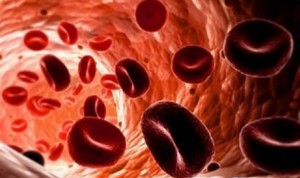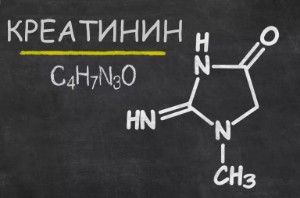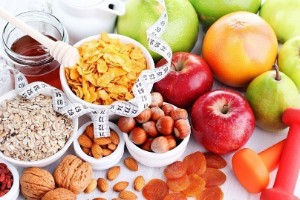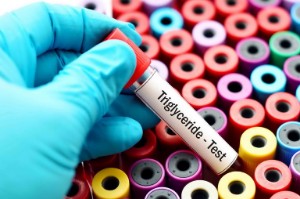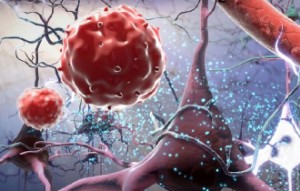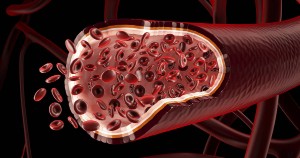What does elevated homocysteine mean and how to lower it — 3 basic steps
 The secret of longevity and quality living of old age in Japan is not a miracle.
The secret of longevity and quality living of old age in Japan is not a miracle.
It is predetermined by many factors, starting with the lifelong practice of various longevity exercises, as well as an active lifestyle (some Japanese, even after 100 years, continue to run their own small business, do accounting and professional communication with people) and ending with the millennia-long tradition of living in harmony with nature.
An integral part of nature is the traditional diet of the inhabitants of the amazing island, which is based on fish, rice and vegetables. Such a diet provides a high content of all B vitamins, including folic acid (B9) in the body, while simultaneously eliminating an excess of heavy animal proteins, which are found in large quantities in meat, eggs and dairy products.
According to research, it is the excessive consumption of proteins, especially of animal origin, with a lack of vitamin B-rich foods (vegetables, greens and cereals) in the diet that is the main prerequisite for raising homocysteine levels above normal.
But what does elevated homocysteine mean and how is it dangerous? How can its level be lowered using safe and proven methods? What should I do if home treatments are not enough? All the answers are below.
Content
What is the danger of high homocysteine &8212; 4 facts
Below we will look at the 4 main areas of health that are particularly negatively affected by elevated homocysteine.
1. Increases the risk of developing heart and vascular diseases
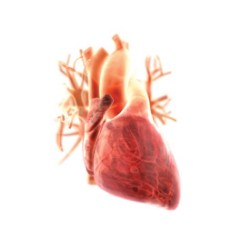 A healthy heart, clear memory and full cognitive abilities are directly related to the level of homocysteine in the body.
A healthy heart, clear memory and full cognitive abilities are directly related to the level of homocysteine in the body.
A direct relationship between high levels of this amino acid in adults and diseases of the cardiovascular system was suspected in 1960 by American scientist Kilmer S. McCully.
&171;Homocysteine theory of atherosclerosis &187; was laid down by him in the book &171;Homocysteine Revolution&187; (The Homocysteine Revolution).
It turned out, cholesterol is not at all the root cause of deadly vascular obstruction , namely homocysteine, which has an initial destructive effect on the inner surface of blood vessels &8212; endothelium.
2. Impairs cognitive function
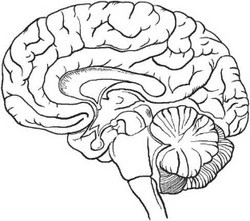 In recent decades, studies have shown a correlation between the severity of hyperhomocysteinemia and the development of atrophy and shrinkage of the gray matter of the brain
, along with the accompanying symptoms and signs.
In recent decades, studies have shown a correlation between the severity of hyperhomocysteinemia and the development of atrophy and shrinkage of the gray matter of the brain
, along with the accompanying symptoms and signs.
Dementia, Alzheimer's disease, senile dementia are directly dependent on hyper-homocysteine levels in patients.
If in the rest of the body the processes of reverse synthesis of homocysteine into non-hazardous compounds can take place in three ways, then in the brain this is limited to only one type of chemical reaction. This determines the strong predisposition of elderly patients with high levels of homocysteine to irreversible death processes cognitive functions and of memory , as well as violations of spatial and temporal orientation.
Pay attention also to 7 most harmful foods for the brain .
3. Contributes to the development of depression
 It turns out not to stress
are dangerous in themselves.
depressive states
in modern man, and the insufficiency of his mental function is positive to overcome them.
It turns out not to stress
are dangerous in themselves.
depressive states
in modern man, and the insufficiency of his mental function is positive to overcome them.
As a result, prolonged depression causes many dangerous diseases of both a mental and physiological nature. And in this case, scientists call homocysteine the main culprit of the disorders, since it is he who suppresses the ability of brain cells to renew themselves in a timely manner.
4. Homocysteine is the enemy of healthy offspring
 The normal process of placental metabolism requires a decrease in the content of homocysteine in the expectant mother, and in cases of healthy pregnancy, this function is controlled by the body itself in the second two trimesters.
The normal process of placental metabolism requires a decrease in the content of homocysteine in the expectant mother, and in cases of healthy pregnancy, this function is controlled by the body itself in the second two trimesters.
With high rates, doctors do not even recommend pregnancy planning, but prescribe special drugs (folic acid and angiovit – a preparation of B vitamins).
The danger of hyperhomocysteinemia for the fetus is due to the same harmful effects on blood vessels , as a result of which the risks of various pathologies increase. For those who gave birth earlier and those who did not give birth, a high content of homocysteine is equally dangerous for the development of infertility.
In men, higher-than-normal homocysteine also has a negative effect on the likelihood of fertilization.
The mechanism of the problem
It's time to clarify what homocysteine is, this scourge of the cardiovascular and nervous systems and at the same time the "superagent" of premature aging. And what does it mean if the level of homocysteine turned out to be higher than normal?
Homocysteine is an amino acid not involved in protein synthesis. This chemical compound is a homologue of another amino acid, cysteine, which is metabolized from methionine during demethylation.
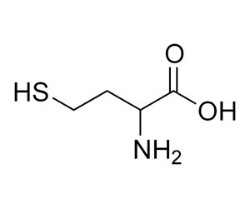 With the normal functioning of the body, homocysteine is just a kind of transit agent during metabolic processes and does not linger in the body in its pure form, but is immediately converted either back into methionine or cysteine, followed by natural excretion from the body.
With the normal functioning of the body, homocysteine is just a kind of transit agent during metabolic processes and does not linger in the body in its pure form, but is immediately converted either back into methionine or cysteine, followed by natural excretion from the body.
It is at the stage of re-synthesis that the problem may arise. The reason is that for the complete conversion of homocysteine it is necessary to have a certain amount of B vitamins , especially B1, B6, B9 (folic acid) and B12.
Prolonged delays of homocysteine in the body disrupt the regulation of detoxification, fat metabolism and others, leading to further dysfunctions in the formation of such important elements as taurine, adenosine, glutathione and others.
On a physical level, homocysteine is like a highly toxic acid, destroys the inner surface of blood vessels, creating wounds and cracks . Our body, in protective ecstasy, begins to camouflage these lesions with blood clots and cholesterol plaques. As a result, vascular obstruction develops, which later leads to heart attacks and strokes.
Blood content norm
The normal level of homocysteine is considered to be no more than 15 micromoles per liter of blood. However, doctors and nutritionists recommend aiming for a level of 7 mmol. Check the table for the degree of excess:
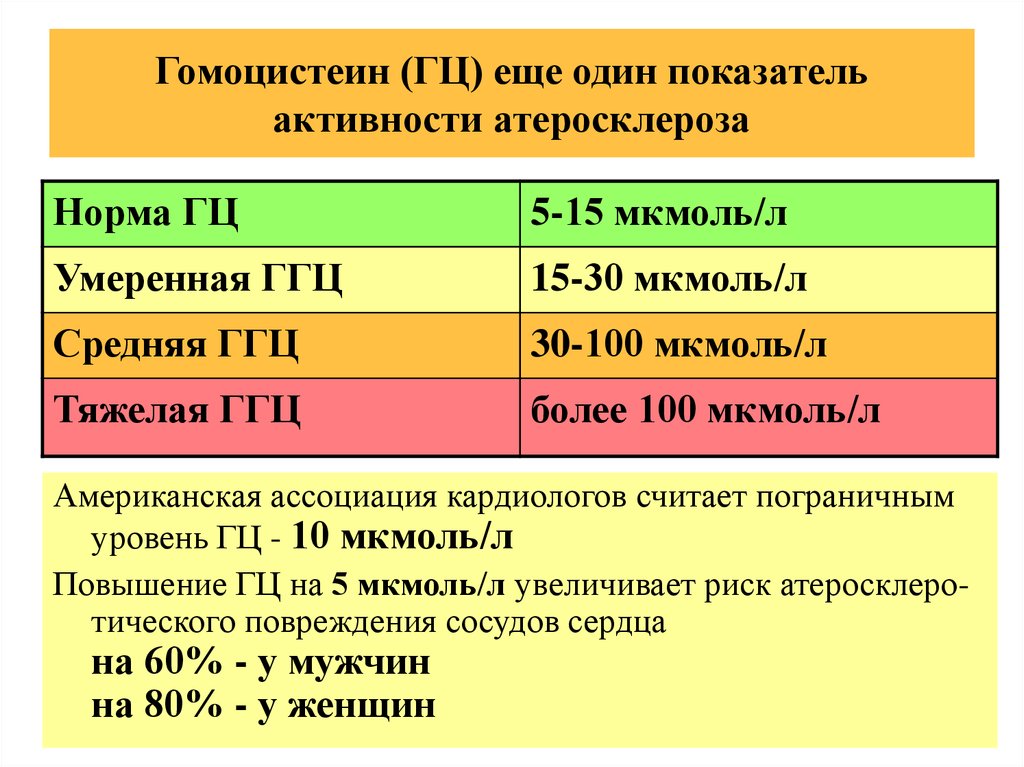
Some people have a genetic inability to synthesize B vitamins into their active form, that is, they have a disrupted folate cycle, as a result of which, especially after the age of 35, high homocysteine levels are observed.
In such cases, it is difficult to achieve results only by diet and giving up bad habits, if we talk about the target level of homocysteine no more than 7 mmol (although in the West there are various "age standards" that allow figures of 11 or more mmol, it is considered that the optimal norm is 7 or less).
The rule: "less is better" &8212; definitely works in the case of homocysteine. In order to quickly lower its level, after special tests, the doctor prescribes treatment, which consists in taking one or more B vitamin preparations, the effectiveness of which has been confirmed by research.

Interestingly, if folic acid was previously prescribed in its pure form, then modern medicine advises active folate supplements or drugs based on them (the so-called 5-methyltetrahydrofolate or methyltetrahydrofolic acid), since inactive B9 with genetic inheritance will not give the desired results.
How to reduce it — the first 3 steps
Studies have shown that the more methionine comes from protein foods, the higher the risk of unprocessed homocysteine and the more B vitamins the body needs to get rid of it. Thus, excessive consumption of proteins, especially of animal origin, with a lack of vitamin B-rich foods (vegetables, greens and cereals) in the diet is the main prerequisite for homocysteine "overdose".
It would seem that the solution is very simple: reduce the consumption of meat and dairy products, and enrich your table with green salads and porridges. But here it is necessary to remember about the bad habits that can negate all your best endeavors.
Alcohol, smoking and coffee, complemented by a sedentary lifestyle, have an absolutely critical impact on the state of affairs. Familiar? Meat-eating, nicotine, alcohol and lack of movement are all the same risk group as with high cholesterol. But, as already mentioned, homocysteine is the conductor of cholesterol into the blood vessels. There will be no damage &8212; there will be no deadly plaques to "heal" them.
So, before talking about the food diet, it is necessary to clearly identify the forbidden border, beyond which no diet will help. If you take care of your blood vessels, and even more so if you have already been diagnosed with one of the above diagnoses (atherosclerosis, thrombosis, risk of heart failure, any disorders of the nervous system, depression), as well as in case of pregnancy, urgently stop using:
- Nicotine;
- Of alcohol;
- Coffee and caffeine-containing products.
1. Coffee overdoses are unacceptable
 Caffeine destroys the enzyme methionine synthetase, which is responsible for the re-formation of methionine from homocysteine and at the same time the active state of the folate cycle (when B vitamins are properly absorbed and perform their functions).
Caffeine destroys the enzyme methionine synthetase, which is responsible for the re-formation of methionine from homocysteine and at the same time the active state of the folate cycle (when B vitamins are properly absorbed and perform their functions).
2-3 cups are considered the norm for coffee consumption (already when drinking from 4 cups or more, an increase in homocysteine content was recorded by 19% in men and by as much as 28% in the fairer sex).
How to deal with coffee addiction see our article.
2. Quitting smoking
 Smoking reduces the level of vitamins B12 and B6, due to the cyanides present in cigarette smoke. This is another additional proof that secondhand smoke turns out to be much more harmful
than active, because it is from smoke that a non-smoker gets a dose of deadly poison with complete impunity.
Smoking reduces the level of vitamins B12 and B6, due to the cyanides present in cigarette smoke. This is another additional proof that secondhand smoke turns out to be much more harmful
than active, because it is from smoke that a non-smoker gets a dose of deadly poison with complete impunity.
In smokers, each cigarette per day increases the percentage of homocysteine by 1% and 0.5% in women and men, respectively.
For all the time of research on the effects of homocysteine on health, the highest rates were found in smokers!
3. Alcohol restriction
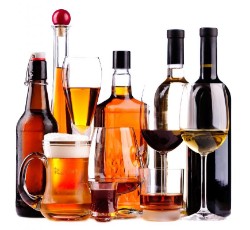 Analyses of people with alcohol dependence show extremely low levels of vitamin B6 and folate.
Analyses of people with alcohol dependence show extremely low levels of vitamin B6 and folate.
Ethanol, the main alcohol component, inhibits the activity of methionine synthase in the liver, as a result of which the concentration of homocysteine in the blood acquires critical values.
Getting rid of myths. A weak argument is that Caucasians, who are known to consume a lot red wine , are long-lived. The fact is that their wine is mostly locally produced, absolutely natural and retains the high antioxidant properties of grapes. This is in no way comparable to the cheap powdered drinks on the shelves of most of our stores.
But it is precisely to these that the bulk of the drinking population of the country resorts. In addition, the mandatory presence of fresh bright green greens (i.e. folic acid) in large quantities is another difference between the Caucasian table and the traditional meal of people suffering from alcohol addiction: a bottle, a pickle and a piece of black bread "to breathe".
As a rule, studies on homocysteine are conducted on middle-aged people, that is, about 40 years or more, since it is from this moment that the protective functions of the body begin to noticeably weaken. That is, if the consequences of harmful addictions were not pronounced before this age, then now is the time to start restrictions, or even better, to give up altogether.
Diet with elevated homocysteine
We have already found out that the way homocysteine enters the body is through the use of animal proteins, from which, during synthesis, another amino acid methionine is first formed, and then it is converted into homocysteine.
Thus, any diet therapy should be aimed, on the one hand, at limiting the consumption of animal proteins, and on the other hand, at enriching the diet with foods rich in B vitamins, which are cofactors of homocysteine conversion.
So what can you eat, and what is not allowed? Which products are allowed and which are prohibited?
What should you limit yourself to?
Are subject to restriction (in order, from more to less):
1. Animal products, rich in methionine, namely:

- Red meat;
- Chicken;
- Turkey;
- Pork;
6-8 hours after taking a protein-rich meal, the level of homocyteine in blood plasma increases by 10-15%.
2. Dairy products based on animal milk:
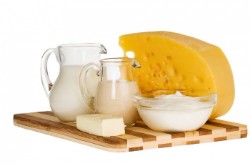
- Milk
- Cheese
- Cottage cheese
- Fermented dairy products
Give up heavy protein dinners, for example, consisting of cottage cheese and sour cream, as they lead to high homocysteine levels in the morning.
3. Legumes in large quantities. 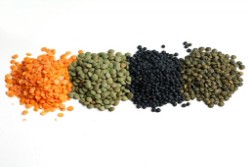 Although they are a source of B vitamins, and beans are especially rich in folic acid, overdose should not be allowed.
Although they are a source of B vitamins, and beans are especially rich in folic acid, overdose should not be allowed.
The Arabs say that "too many legumes thicken the blood." From a scientific point of view, the same process of slagging the body with homocysteine occurs as with meat abuse.
4. Harmful combinations of meat and legumes in one meal. Different types of protein require a different "approach" of the body for its processing. In the case of mixing, we add trouble to our digestive tract and at first we only observe indigestion problems, which can later continue with vascular complications.
If the latter (folate cycle disorders) is not genetic in nature, then an adequate range of homocysteine content can be achieved with a balanced diet, with the obligatory presence of foods rich in vitamins B1, B6, B9 and B12.
8 useful food groups
Include in your diet on a regular basis:

- Liver, eggs, fish. The latter, by the way, can be completely replaced with meat in special cases, since it has been proven that when switching to a fish-vegan diet, people achieve a decrease in homocysteine levels without additional vitamin supplements by 13%. Liver and eggs, as well as red meat, in addition to being rich in protein, are also sources of B vitamins, and especially B12, which is not found in any vegetable product. Therefore, a purely vegan diet is not recommended for people at risk, especially pregnant and elderly people.
- Spinach, parsley, roccola, broccoli, tomatoes, any other vegetables. Vegetables and greens are abundant in B vitamins, they have methyl group donors and the content of methionine is limited. Follow the rule: the more intense the green color, the more folic acid it contains. And the French generally call spinach the king of vegetables!
- Nuts, especially walnuts and peanuts. Different nuts contain different B vitamins, so it is optimal to regularly consume mixtures of various nuts.
- Cereals. Arrange breakfasts from various mixtures of cereals, especially enriched ones, and also cook porridges from unprocessed cereals. Buckwheat and oatmeal are extremely useful.
- Grain sprouts. Sprouted grains contain the largest amount of vitamin B and many other useful elements. Therefore, do not neglect the opportunity to enrich your diet with this inexpensive delicacy.
- Yeast. They can be added as an additive to any food containing a certain amount of liquid. The same applies to bran.
- Potatoes and their varieties (sweet potatoes and others). It has a lot of vitamin B6.
- Rye bread. It is in this type of bread that a large amount of vitamin B9, or folic acid, is contained.
Doctors' advice on pregnancy planning
An increased content of homocysteine in the plasma of pregnant women leads to the development of pathology of both pregnancy and the fetus.
Recent studies have shown a correlation between high homocysteine content and abnormalities such as hypoxia, gestosis, premature birth, bifurcation of fetal limbs, stillbirth, Down syndrome, and other genetic diseases.
 Therefore, with homocysteine levels above 7 mmol, the doctors of the antenatal clinic do not even allow women to plan pregnancy, and if they find high rates in pregnant women (more than 5 mmol) in the second and third terms, they unequivocally prescribe special dietary restrictions, and also prescribe increased dosages of B vitamins (agiovit) and folic acid.
Therefore, with homocysteine levels above 7 mmol, the doctors of the antenatal clinic do not even allow women to plan pregnancy, and if they find high rates in pregnant women (more than 5 mmol) in the second and third terms, they unequivocally prescribe special dietary restrictions, and also prescribe increased dosages of B vitamins (agiovit) and folic acid.
Ideally, the diet in the early stages of pregnancy should be protein-rich, for a full-fledged structure of the child. Therefore, they cannot completely abandon meat or dairy products. At the same time, some foods can cause excessive metabolism, indigestion, due to reduced gastrointestinal function during this period, and due to the physiological weakening of the excretory system, stagnation of metabolic processes is possible.
Slagging the body of the expectant mother is fraught with fetal intoxication , and therefore, proper nutrition should be treated with special predilection. If there are no deviations, then the best option would be:
- A competent combination of animal and vegetable products;
- Separate meals;
- Dairy and grain breakfasts;
- Light dinners with minimal protein content;
- Lunches rich in greens and vegetables with the presence of a portion of animal proteins.
You should give up:
- Alcohol;
- Coffee and caffeine-containing products (any soda, cocoa, strong tea, chocolate);
- Smoking and being near people who smoke;
- Excessive consumption of any meat, especially red meat. It is advisable to replace it with fish 2-3 times a week (if there are no allergies).
An important recommendation for pregnant women is the need to walk at least 2 hours daily!
The need for physical activity is relevant for the prevention of any diseases, but especially for the cardiovascular system . On one of the signs on the paths in the sanatorium near Moscow named after Herzen, the words of the great writer were once written: "Daily walking prolongs the life of the heart."
Useful video
And now we invite you to familiarize yourself with the video:
;
Conclusion
Whatever age group you belong to, be sure that the less homocysteine in your blood you have, the better, so at least give up all bad habits, and also become an adherent of a balanced diet, practice regular fasting days, as well as daily physical training. And of course &8212; save good mood ! Rest assured, your chances of celebrating the centenary will certainly increase!
